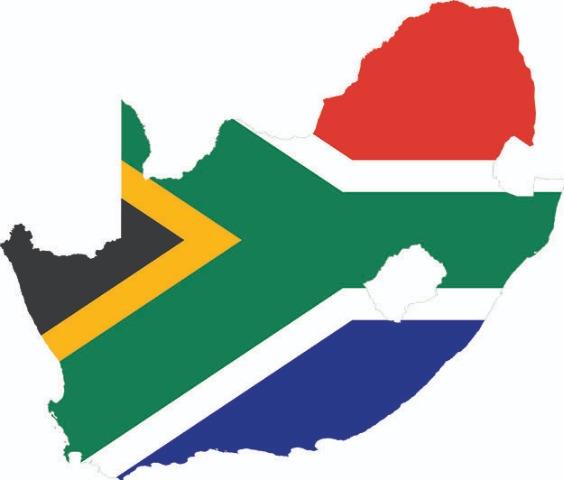Land Acting
“
—
”
In 1996, South Africa adopted a new a constitution that formally defined the term “land expropriation”, in an effort to rectify historical instances of land appropriation brought about by colonialism and apartheid. However, ambiguous terminology within the constitution, such as “just and equitable” compensation regarding expropriation of land, is one of the main causes for slow progress in reparations to those affected by land appropriation.
Previously implemented land acts that contradict definitions within the current constitution, such as the the 1975 Act,2 have also stymied progress. As of 2018, the government has been redrafting a so-called Expropriation Bill,3 which aims to clarify unconstitutional acts and accelerate land reform in the country.
The 1975 Act was drafted and implemented during apartheid, and uses the same terminology as the current South African constitution. In other words, the word “expropriation”, initially generated in the aparthied legislation for the purposes of removing Black communities from their properties, is now used in service of reversing injustice.
There have been several counter reactions to the proposed Expropriation Bill. There are accusations of “anti-white racism”,4 virally disseminated through social media, former United States president Donald Trump, and right-wing pressure groups such as AfriForum, The Cato Institute, and Suidlanders.5 On the other hand, the South African Economic Freedom Fighters party, that originally initiated the bill and recently rejected motions to amend it before implementation,6 are constantly suspected and accused of crimes against White farm owners.
Between “nationalization of land” and “white Genocide”, South-Africa attempts to correct the mistakes of the past and indirectly initiate new ones.
![]() Image source:
The shape of South-Africa as a torn flag. Property24.com,1 Unknown author.
Image source:
The shape of South-Africa as a torn flag. Property24.com,1 Unknown author.
References
1. “What does SA's Expropriation Bill mean for property rights?”, Property24.com, 2021. https://www.property24.com/articles/what-does-sas-expropriation-bill-mean-for-property-rights/30223
2. The 1975 act leaves out most factors regarding value of compensation, whereas the constitution allows expropriation “in the public interest” and elaborates on all monetary and historical factors of the compensation formula. Jeffery, Anthea. “The threat of expropriation is enough to stall economic recovery”.in Biznews, 2021. https://www.biznews.com/thought-leaders/2021/02/11/land-expropriation-in-sa
3. S’negugu Dlamini and Ayanda Motlou, “Expropriation #8: Where on earth are we South Africa?”, 2002. https://www.schindlers.co.za/uncategorized/expropriation-8-where-on-earth-are-we-south-africa/
4. James Pogue, “The Myth of White Genocide”, in Pulitzer Center, 2019. https://pulitzercenter.org/stories/myth-white-genocide
5. David Mckenzie and Brent Swails, “They're prepping for a race war. And they see Trump as their 'ray of hope'” in CNN, 2018. https://edition.cnn.com/interactive/2018/11/africa/south-africa-suidlanders-intl/
6. Nkanjeni, Unathi. “Here’s why the EFF rejected the land expropriation without compensation bill.” in Sunday Times. 2021. https://www.timeslive.co.za/politics/2021-12-08-heres-why-the-eff-rejected-the-land-expropriation-without-compensation-bill/
1. “What does SA's Expropriation Bill mean for property rights?”, Property24.com, 2021. https://www.property24.com/articles/what-does-sas-expropriation-bill-mean-for-property-rights/30223
2. The 1975 act leaves out most factors regarding value of compensation, whereas the constitution allows expropriation “in the public interest” and elaborates on all monetary and historical factors of the compensation formula. Jeffery, Anthea. “The threat of expropriation is enough to stall economic recovery”.in Biznews, 2021. https://www.biznews.com/thought-leaders/2021/02/11/land-expropriation-in-sa
3. S’negugu Dlamini and Ayanda Motlou, “Expropriation #8: Where on earth are we South Africa?”, 2002. https://www.schindlers.co.za/uncategorized/expropriation-8-where-on-earth-are-we-south-africa/
4. James Pogue, “The Myth of White Genocide”, in Pulitzer Center, 2019. https://pulitzercenter.org/stories/myth-white-genocide
5. David Mckenzie and Brent Swails, “They're prepping for a race war. And they see Trump as their 'ray of hope'” in CNN, 2018. https://edition.cnn.com/interactive/2018/11/africa/south-africa-suidlanders-intl/
6. Nkanjeni, Unathi. “Here’s why the EFF rejected the land expropriation without compensation bill.” in Sunday Times. 2021. https://www.timeslive.co.za/politics/2021-12-08-heres-why-the-eff-rejected-the-land-expropriation-without-compensation-bill/
 Image source:
The shape of South-Africa as a torn flag. Property24.com,1 Unknown author.
Image source:
The shape of South-Africa as a torn flag. Property24.com,1 Unknown author.